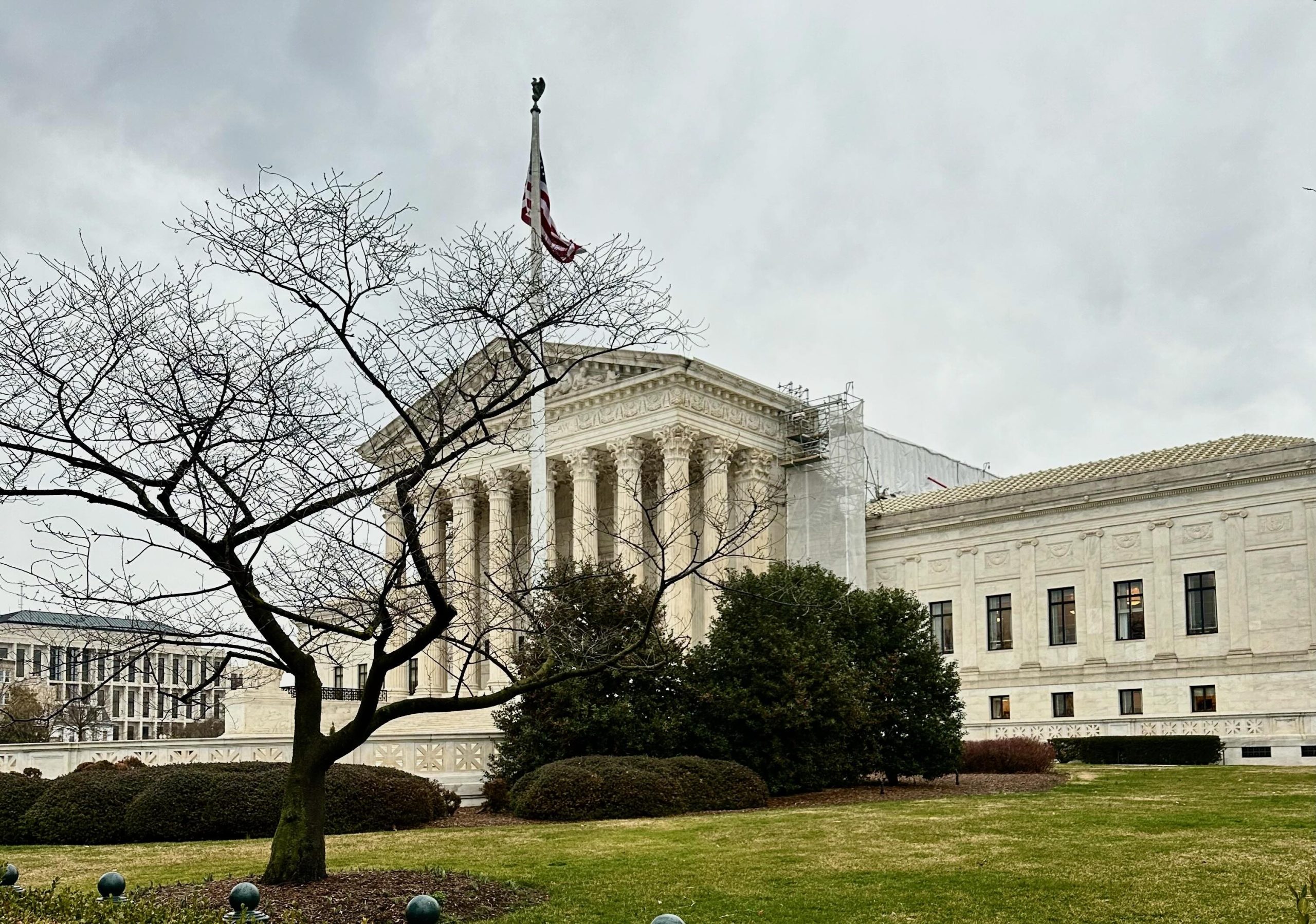The criminal side of the docket is not what you think


ScotusCrim is a recurring series by Rory Little focusing on intersections between the Supreme Court and criminal law.
Please note that the views of outside contributors do not reflect the official opinions of SCOTUSblog or its staff.
Welcome to the initial biweekly “ScotusCrim” column for SCOTUSblog, which we hope will help fill a gap in Supreme Court coverage. During most terms, public attention focuses on grand social-issue decisions (like this term’s United States v. Skrmetti) or cases with large “political” implications (like this term’s Trump v. CASA). Crime is a big seller in movies and television, but the criminal law system itself is far less dramatic and generally fails to hold the public’s attention. This column aims to bring the criminal side of the Supreme Court’s docket back into focus.
A little about me
For 30 years or more I have been compiling an annual booklet summarizing all the “Criminal Law and Related Decisions” of the Supreme Court, published every summer by the Criminal Law Section of the American Bar Association. You can find some of them here. I try to dispassionately summarize the opinion of every justice who writes in a criminal law or related case, with an occasional “editorial comment” thrown in. Although (or perhaps because) I was a federal criminal prosecutor and appellate lawyer for seven years, my perspective generally runs (but not always) to the “moderate-liberal” side of the issues. But my overall desire is to inform, to be fair and accurate, and to go “beyond” the bare words of each opinion. I sometimes point out inconsistencies among or within the justices and their opinions, and I try to find some humor (intended or otherwise) in their written views.
What even counts as a “criminal law” case?
Determining what exactly constitutes the Supreme Court’s “criminal docket” is an inexact science. Various cases that are technically “civil” – for example, habeas corpus petitions involving criminal sentences – are thought of as “criminal cases” by many. So too “civil” actions founded on claims of criminal procedure violations – for example from the 2024-25 term, cases with underlying Fourth Amendment issues (Barnes v. Felix (should an excessive force claim be evaluated only at the “moment of threat”?)) and Martin v. United States (is there a federal tort remedy for an erroneous FBI house search?)) – can be of great interest to criminal law practitioners. In addition, subjects like immigration and securities law violations, often a focus of the docket, can have direct relevance to issues of criminal law.
What surprises underlie this term’s criminal docket?
First, many court observers are surprised to hear that every term, year in and year out, a significant bulk of the Supreme Court’s merits opinions address “criminal law and related” cases. By my own (perhaps idiosyncratic) categorization, the percentage of this on the docket has not been less than 25% in the past 50 years. For the 2024-25 term, it was over 40%, which is not abnormally high. Of the 67 decisions listed on the court’s own Opinions of the Court site, 29 are either answering criminal law issues or addressing topics of interest to criminal law practitioners.
Second, of these 29 CLAR (criminal law and related) cases, almost half – 14 of them – were “pure” criminal law decisions. A list is below. “Pure” does not mean that they were direct appeals of criminal convictions – for various reasons (perhaps to explore in a later column), the court hears relatively few such cases. But the issues these 14 cases evaluated were at the heart of criminal prosecution and defense. Overall, 14 “pure” criminal law cases of 67 court opinions is over one-fifth of the court’s entire merits docket.
The third “surprise” headline is that the court’s “liberals” (that is, Justices Sonia Sotomayor, Elena Kagan, and Ketanji Brown Jackson), or the interests that liberals might prefer, prevailed in 10 of the 14 “pure” criminal law decisions. In other words, over 70% of the court’s meatiest criminal law cases went for the defense or liberal view. Indeed, in all three federal criminal sentencing cases (Hewitt, Esteras, and Perttu), the defense position prevailed (with former U.S. Sentencing Commissioner Jackson authoring the 5-4 Hewitt decision). And three of the cases (Hamm, Andrew, and Goldey) were decided without argument, an indication that the decisions were so clear that argument was unnecessary.
This picture runs contrary, I think, to the overall impression that the public has of the current Supreme Court. The New York Times entitled its review of the term as “A Triumphant Term for Trump.” The Wall Street Journal’s review suggested there is a “conservative bloc” controlling the court. SCOTUSblog’s own review described “notable wins for the court’s conservative majority.” These analyses are not wrong. But they discuss few if any of the court’s criminal law decisions. And in those decisions, the liberal justices were on the “winning” side more, much more, often than not.
Of course, this does not mean that the current court is a liberal one, or that a majority of the justices somehow possess liberal criminal law views. My general point is simply to get readers focused on the criminal side of the Supreme Court’s docket, and to consider with care about what that aspect of the court’s work might mean.
More pointedly, some conclusions and speculations (which I generally abhor) are possible. First, as Steve Vladeck and others have explained, the justices select the cases they hear. This term suggests that the liberal justices may be carefully finding cases whose facts or legal conclusions can attract justices from the “center” of the court. The decisions in six of the 14 cases were unanimous (albeit with some separate concurrences), and three were per curiam – that is, unsigned opinions “for the court.” One might speculate that liberal justices with criminal law experience (Jackson and Sotomayor, and Kagan as solicitor general) are pushing for review of “easy” criminal law cases likely to have less conservative or ideological positions.
Second, authorship of these cases was assigned to a variety of justices. None went to Justice Samuel Alito, who once served as a U.S. Attorney and is rarely defense-friendly. Alito wrote or joined separate dissents or concurrences in eight of the ten “liberal” decisions and did not write in any of the four more conservative ones. As usual, there were no surprises in Justice Alito’s criminal law orientation. Justice Brett Kavanaugh also did not write in a pure criminal law case – but that might just suggest that his attention was focused on the more “ideological” side of the docket.
Meanwhile, in the eight liberal cases with identified authors, the chief justice and Justice Neil Gorsuch each wrote two, and Justice Amy Coney Barrett wrote one. That is five of the eight, with Sotomayor, Kagan, and Jackson each writing one. Chief Justice John Roberts was in the majority in every one of these eight “liberal” decisions; that said, this might suggest more about his control of the court than it does about his politics. And, again, it perhaps suggests that the liberal justices, and the court in general, are careful about which criminal law cases to take up.
Further detail will have to await future columns. But here is one final thought: Perhaps there is less “political” divide among the justices – and indeed, among the public in general – when it comes to criminal law cases. When asked long ago why a clerk for Justice William Brennan (me) would work for an Ed Meese Justice Department, my response was that these two personages, worlds apart on political social issues, likely agreed on 98% of all criminal cases. Both believed that the guilty should be convicted, that the innocent should either not be prosecuted or be acquitted, and that the government should be fair and turn “square corners” when criminal liability was at stake. Most notably today, Justice Gorsuch often sides with “the little guy” who has been treated unfairly (his questions at the Martin oral argument were revelatory).
In sum, the criminal docket of the Supreme Court deserves more attention than it generally gets. And the results of that side of the docket need to be folded into our general perceptions of the court. This column seeks to assist in that effort.
List of “pure” criminal law decisions from the 2024-25 term
These are in alphabetical order. * marks those which I think favored the liberal view. The one-sentence summaries below are simple; important details and greater complexities abound. As I always tell my students: Read the full opinion!
*1. Andrew v. White (Jan. 21): Granting habeas relief in death penalty case on rule that erroneous admission of unduly prejudicial evidence can violate fundamental fairness.
*2. Barnes v. Felix (May 15): Fourth Amendment, rejecting a narrow “moment of threat” theory for excessive force.
*3. Bondi v. VanDerStok (March 26): Gun control, upholding agency regulations regulating weapons parts kits (used to make untraceable “ghost guns”).
4. Delligatti v. United States (March 21): Even acts of omission that cause injury can be a “crime of violence” in 18 U.S.C. § 924(c).
*5. Esteras v. United States (June 20): When considering whether to revoke supervised release, the court may not consider retribution for the original offense.
*6. Glossip v. Oklahoma (Feb. 25): New trial for death row defendant, due to the prosecution’s failure to correct false testimony (Napue (1959) error). (Prior decision in this case, a challenge to the method of execution, was in 2015.)
7. Goldey v. Fields (June 30): Court declines to extend Bivens (1971) to excessive force claims against federal prison officials.
*8. Hamm v. Smith (Nov. 4, 2024): Remanding death penalty case for clarification of how to evaluate different IQ scores in applying Atkins (2002, may not constitutionally execute the intellectually disabled). The Supreme Court on June 24 agreed to review the ruling by the U.S. Court of Appeals for the 11th Circuit on remand.
*9. Hewitt v. United States (June 26): The First Step Act applies to the defendant when his sentence was imposed before the FSA, but was then vacated after the FSA was enacted.
10. Kousisis v. United States (May 22): Fraudulent inducement is a valid theory for mail/wire fraud prosecution even if the defendant did not intend to cause economic loss to the victim.
*11. Perttu v. Richards (June 18): Prisoner is entitled to jury trial on exhaustion issue that is intertwined with a merits claim entitled to jury trial.
*12. Martin v. United States (June 12): A complex analysis of the Federal Tort Claims Act reverses U.S. Court of Appeals for the 11th Circuit decision that barred claim of persons whose home was erroneously, and forcefully, raided and searched by the FBI.
13. Smith & Wesson v. Estados Unidos Mexicanos (June 5): Mexico fails to plausibly allege that gun manufacturers aided and abetted gun dealers’ unlawful sales to Mexican traffickers, under the federal Protection of Lawful Commerce in Arms Act.
*14. Thompson v. United States (March 21): Statements that are misleading but not false are not within the criminal false bank statements statute.
Posted in Recurring Columns, ScotusCrim